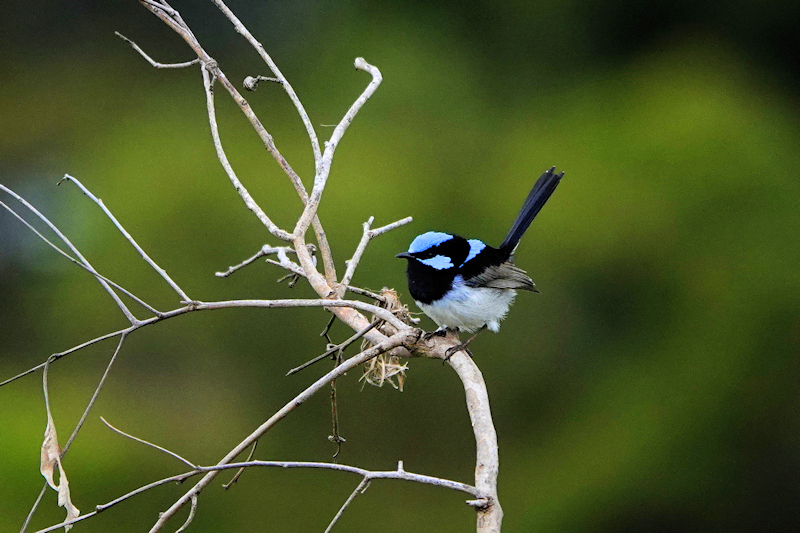Superb Fairy-Wren (Malurus cyaneus)

Introduction
In the world of avian wonders, the Superb Fairy-Wren (Malurus cyaneus) stands out as a tiny gem of the bird kingdom. These vibrant and charismatic birds, native to Australia, captivate birdwatchers and nature enthusiasts with their striking plumage, intricate social structures, and endearing behavior. Let’s take a closer look at these delightful creatures and discover what makes them so superb.
Appearance
Superb Fairy-Wrens are tiny birds, measuring just 14 to 16 centimeters in length, making them one of the smallest passerines in Australia. They are known for their stunning plumage, which varies between males and females. Males, in particular, sport an eye-catching combination of cobalt blue and black on their heads, back, and tail. During the breeding season, their blue plumage intensifies to attract potential mates. In contrast, females and non-breeding males are more modestly colored, with brownish-gray feathers.
Social Structure
One of the most fascinating aspects of Superb Fairy-Wrens is their intricate social structure. They live in cooperative family groups, consisting of a breeding pair and their offspring from previous breeding seasons. These cooperative groups work together to raise the current season’s chicks, a behavior relatively rare among birds. The older offspring often help feed and protect the new generation, giving these tiny birds a unique and complex social life.
Superb Fairy-wren seen at Anstead Bushland Reserve
Habitat and Range
Superb Fairy-Wrens are primarily found in eastern and southeastern Australia, favoring a variety of habitats, including heathlands, woodlands, and shrublands. They are particularly fond of dense vegetation, where they can forage for insects and small arthropods. Their habitat preference makes them susceptible to habitat loss and fragmentation due to urban development and land clearing, highlighting the importance of conservation efforts to protect their homes.
Diet and Foraging Behavior
These little wonders are insectivorous, relying on a diet of small insects, spiders, and other invertebrates. They have a distinctive foraging style, often hopping and darting through low vegetation to uncover hidden prey. Superb Fairy-Wrens also use their sharp beaks to extract insects from plant material, making them agile and efficient hunters.
Communication and Vocalization
Superb Fairy-Wrens are not only striking visually but also audibly. They have a complex and melodious song, consisting of trills and high-pitched calls. Their vocalizations play a crucial role in maintaining social bonds within the group and defending territories. The male’s song is a prominent feature during the breeding season, where they sing to attract females and deter rival males.
Conservation Status
While Superb Fairy-Wrens are not currently considered endangered, they face threats from habitat destruction and predation by introduced species such as feral cats and foxes. Conservation efforts are essential to protect their habitats and ensure the survival of these delightful birds for future generations to enjoy.
Conclusion
Superb Fairy-Wrens are truly remarkable birds that prove that size is no obstacle to making a big impression in the world of ornithology. With their striking appearance, complex social structures, and melodious songs, these small wonders of the Australian bush are a testament to the diversity and beauty of the avian world. As we continue to appreciate and protect their habitats, we can ensure that Superb Fairy-Wrens continue to enchant and inspire us with their superb qualities.
Superb Fairy-wren seen at SES Anstead Reserve
We are affiliated with Amazon and make a small royalty at no extra cost to you, so by using the links below to purchase your next birding gear you can help us to maintain Simply Birding and continue to bring great content:

Canon, Sony and Nikon cameras: https://amzn.to/4gmtDWk

Lenses for bird photography: https://amzn.to/3WG3vyF

Tripods: https://amzn.to/3PVDNT0

Memory Cards: https://amzn.to/3PV4Y0z

Bird books: https://amzn.to/42NgsKS

Binoculars for bird watching: https://amzn.to/42G0nGZ

Spotting Scopes for bird watching: https://amzn.to/4hom5nq















